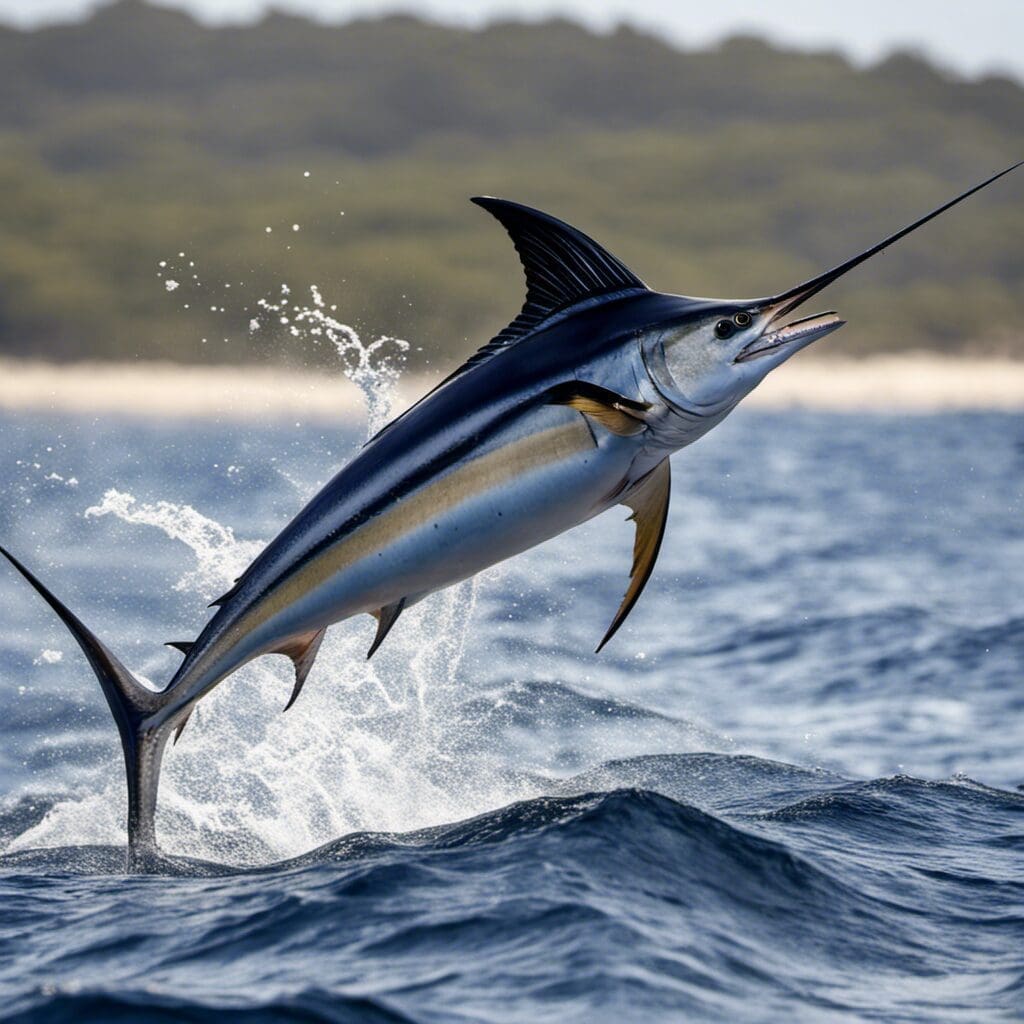Introduction
Black Marlin (Istiompax indica) is an exceptional species of marlin, from the family Istiophoridae and order Perciformes. Known for its powerful nature and striking color, the Black Marlin is a spectacle in the deep blue sea. It’s one of the premier game fish and sought after by sportfishers worldwide.
Conservation Status
Black Marlin is currently listed under the “Data deficient” category by the International Union for Conservation of Nature (IUCN). This means that not enough information is available to accurately judge the species’ risk of extinction. Ongoing efforts are being made by NGOs, local communities and international entities to monitor this species to gain further data for its conservation status.
Statistics
| Measurement | Average | Range |
|---|---|---|
| Length | 11 feet | 10 – 15 feet |
| Weight | 220 – 670 lbs | Up to 1500 lbs |
| Average Lifespan | 15 years | … |
Distribution and Habitats
Black Marlins are found in the tropical and subtropical waters of the Atlantic and the Indian and Pacific Oceans. This species is known to migrate massive distances through these waters, primarily for spawning purposes. Their preferred habitat is open ocean, from surface level down to about 900 feet. They thrive in warm waters that range from 21 to 30 degrees Celsius.
When and Where to See
The best time to see Black Marlins is during their spawning seasons which typically occur from September to March. Additionally, dawn and dusk are considered optimum times to observe these magnificent creatures.
How to Catch
Due to their robust and powerful nature, catching a Black Marlin requires specific techniques and the right bait. Predominantly, sportfishers use live bait, artificial lures, or a combination of both.
Popular fishing techniques include trolling and live baiting. When it comes to choosing the best time, Black Marlins are caught throughout the year. However, the optimal season might depend on the specific region.
Identification Guide
Black Marlin have a striking jet-black or blue-black color, a dorsal fin with a tall front, and a flat, rigid pectoral fin that is unable to fold away completely. Unlike some other similar species, they lack stripes or spots on the body. This unique appearance sets them apart and makes identification relatively straightforward for seasoned observers.
Culinary Use
While not commonly targeted as a commercial fish, Black Marlin are occasionally caught for their meat. The taste profile of this fish is rich and quite bold, with a relatively high-fat content. In cooking, the meat is usually grilled, smoked, or used in sashimi and sushi.
Additional Information
Behavior
Known for their strength and aggressiveness, Black Marlins are fast swimmers and voracious predators. They feed mostly on small tuna, mackerel, and squids. Their mating habits are still not well-studied but are believed to occur during the major spawning seasons.
Cultural/Historical Significance
In many coastal communities, the Black Marlin has cultural significance related to their prowess and beauty, often depicted in art and local legends.
References and Further Reading
While there is still much to learn about this intriguing species, the following sources provide a wealth of information:

